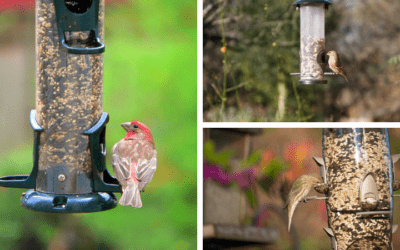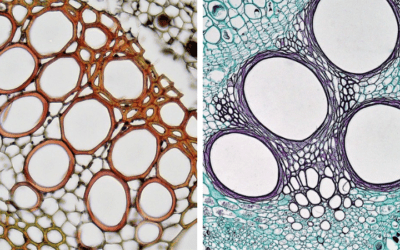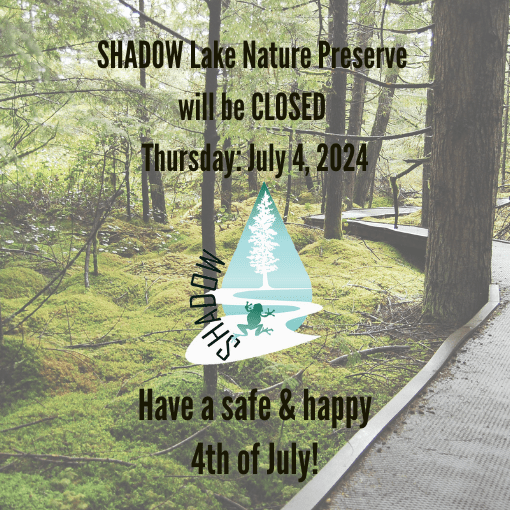Bird Feeders – Dos and Don’ts
Many of us enjoy watching birds in our backyard and love providing food to our feathered friends through bird feeders. However, there is a down side to feeding birds. More than 40% of people in the United States regularly feed birds. Scientific studies have determined...
Plant Xylem Water Filtration
Around the world, wildlife and humans alike are facing major challenges for survival. One of our severe challenges is that over 700 million people lack basic access to safe water. Bacteria, viruses, and parasites that live in water infect humans every day and are...
Native of the Month: Wild Ginger
Wild Ginger - Asarum caudatumWild Ginger, a widespread native plant, can be found from British Columbia all the way to southern California and as western as Montana. You can first spot it by its deep green heart-shaped leaves. From April to July, it...
Native Plants for Pollinators and Wildlife
Spring is here and many of us are looking forward to revamping our yards during the nice weather coming our way. Our native wildlife and plants are also awaiting the changing of the seasons. Longer days and warmer temperatures bring lots of...
Ecosystem Services: Wetlands
Wetlands are sometimes referred to as the kidneys of the landscape because they function as the receivers of waste and filters of water from both natural and human sources. Different types of wetlands provide a wide range of ecosystem services. Ecosystem...
Native of the Month: Coho salmon
Coho salmon - Oncorhynchus kisutchThe Coho (or silver salmon) are anadromous which means they spend most of their lives in the ocean and return to freshwater to spawn. They can grow up to 30 inches and can weigh up to 20 pounds or more. Most salmonid...
Education offerings!
Our new virtual Wilderness Adventure experiences for K-5 students are now available! These Wilderness Adventures are short, interactive videos accompanied with discussion questions and extracurricular activities. Virtual Wilderness Adventures are perfect for...
World Water Day
During the 1992 United Nations Conference on Environment and Development in Rio de Janeiro, leaders from across the globe congregated to explore solutions to problems regarding the global water crisis. World leaders discussed the 2.2 billion people living without...
Nature and Genetic Memory
Years of research suggests that humans feel relaxed, happy, and even healthier while exposed to nature. Two hours per week of nature immersion alleviates stress. Spending time outdoors in a safe setting lowers blood pressure, enhances immune...
Native of the Month: Mock Orange
Mock orange - Philadelphus lewisiiMock orange is in the Hydrangea family and can be found in North America, from British Columbia down through California, and Idaho and Montana. While other varieties can be found throughout the world, 27 of these species are native to...
Effectiveness and Costs of Natural Coastal Protection
Coastal habitats like marshes, coral reefs, and mangroves are threatened by urbanization and development. These habitats when intact provide not only recreation, but also fish production, protection from storms, intrinsic cultural values, and other...
Native of the Month: Townsend’s mole
Townsend's mole - Sccapanus townsendiiWestern Washington Is home to the largest mole in North America, the Townsend’s mole (Scapanus townsendii). The Townsend’s Mole can be found west of the Cascade Mountains ranging from southern British Columbia to northern...
Citizen Science
Noise pollution from vehicles, machinery, and construction impacts people and wildlife alike. Sound pollution can cause stress, nervous disorders, insomnia, increased blood pressure, and hypertension in humans. Research has also found that these noises interfere with...
Restoration around the Nature Preserve
At SHADOW Lake Nature Preserve, we work on projects involving ecological restoration. Ecological restoration is accelerating ecosystem recovery following damage, degradation, or destruction. We create conditions needed for plants and animals become healthy and...
Thank you volunteers!
As 2020 comes to an end, we want to take a moment to celebrate and thank the wonderful people who have made an impact volunteering with SHADOW this year. Our volunteer support is the backbone of our organization. We wouldn’t be where we are today without all the...
Native of the Month: Snowberry
Snowberry - Symphoricarpus albusThere are approximately 15 species in the plant genus symphoricarpos (also known as snowberry or ghostberry). You’ll find common snowberry here in the Pacific Northwest. The distribution of snowberry can be found from...
Trends in Ice Cover and Harp Seals
As marine mammals, harp seals have developed strategies to survive changes in resource availability, but if essentials to live are made even less available due to climate change, it is not certain if these earless creatures will be able to cope. Seals use seasonal ice...
Native of the Month: Barn Owl
Barn Owl - Tyto albaBarn owls can be found in most of the lower 48 states, parts of southern Canada, and around the globe. These owls are non-migratory and reside near grasslands, marshes, deserts, forests, the open plains, and even in busy cities. They nest in...
What makes a plant “native”?
Gardeners, horticulturists, botanists, nature lovers have different definitions of which plants are considered native, invasive, and noxious, but there exist some general conclusions about which flora belong where. One aspect of a native plant is that it...
Salmon Disperse Nutrients
The Pacific Northwest supports biodiverse and rich ecosystems, but without a unique group of fish these habitats would not be the same. Over 137 species rely on the lifecycle of mighty Pacific salmon. Each of the...
Fantastic Fungus
How can mushrooms help restore the forest at SHADOW Lake Nature Preserve? The Pacific Northwest is a great place to enjoy beautiful and varied fruiting bodies of fungi, or mushrooms, scattered about the mossy forest floor. What many people don't know is that below...






















